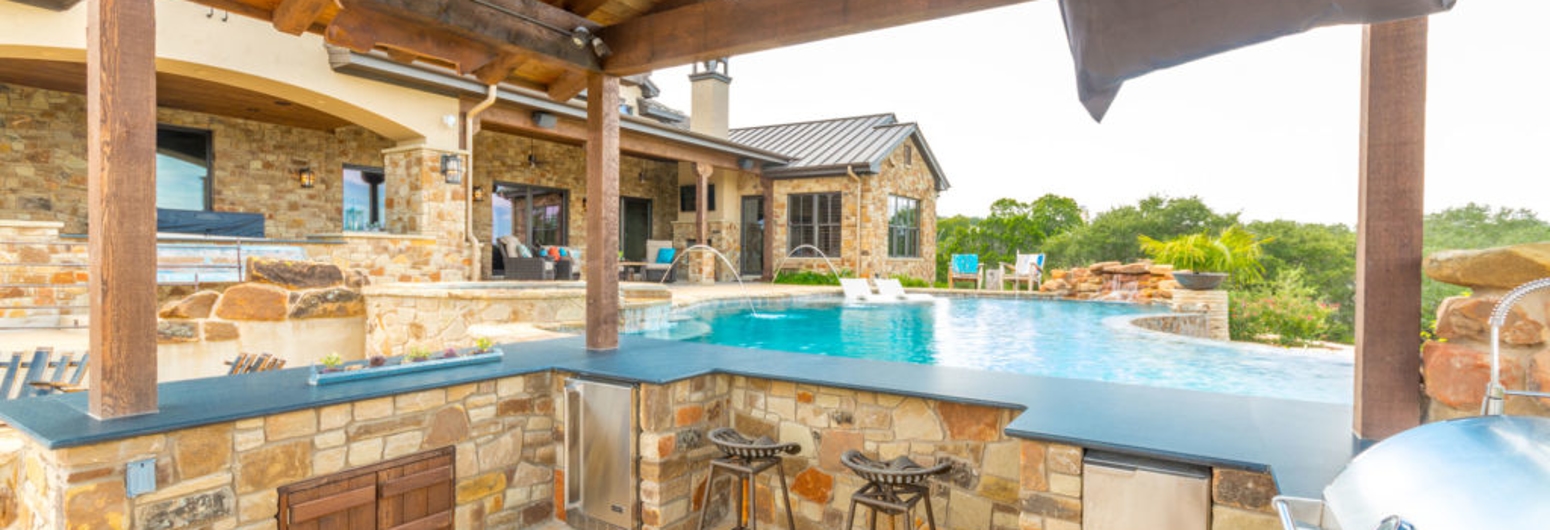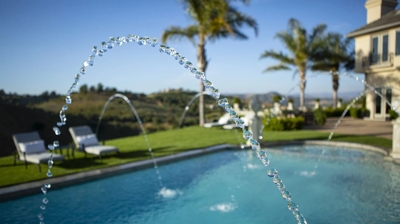What Is Deck Resurfacing?
Is pool deck resurfacing on your to-do list this year? Homeowners generally try to find the right balance between projects they can do themselves and those that should be hired out to specialists. Your own personal aquatic outdoor retreat needs care and attention to look its best and serve you well. Resurfacing your pool’s deck is a job that will benefit from specialized skills and an eye for detail.
Your choice of pool deck materials will make a difference in terms of the type of maintenance your deck will require. The area around your swimming pool can be made from a range of materials, including wood, composite, concrete, pavers, brick, and other choices. When it’s time to resurface this hardscape zone, the materials present will influence what techniques and products need to be applied.
Trending deck materials can completely transform the look of your pool. Keep these points in mind:
- Stamped and stained concrete can beautifully replicate the effect of stone or brick
- Wood composite decks offer refined luxury while being durable and straightforward to maintain
- Interlocking pavers can give your pool area everything from a Mediterranean flair to a contemporary look
- Stone holds up well to the elements and can make your yard look like your favorite getaway resort
When Is Pool Deck Resurfacing Necessary?
Regardless of the deck material present or how diligent you’ve been about maintaining the area around your swimming pool, this space is constantly exposed. Water, direct sunlight, chlorine, dirt, spilled drinks and other environmental and human factors can affect its condition. You may notice signs of wear and tear that indicate it’s time to think about pool deck resurfacing.
Specifically, look for:
- Slippery zones
- Flaking
- Changes in texture
- Rotting (may be seen on wood decks)
- Cracking
- Discoloration
- Structural damage (in severe cases)
If any of these red flags appear, you’ll need to determine whether your decking requires a different maintenance regimen or if a complete redo is in order to improve the area’s safety, integrity, durability, and appearance. The overall condition of the materials and the structure will define the complexity of the task.
Related: Signs It’s Time for Pool Deck Resurfacing
Additional variables to consider are grading, drainage, surrounding natural elements, and existing structures. You want your pool deck to look great and hold up, as well as fit your current lifestyle. When it’s time to resurface, a question to keep in mind is whether you want the decking to serve as an extension of your existing pool or if you’re ready to expand the area into a broader outdoor living space.
Option 1: The DIY Approach
Some homeowners consider pool deck resurfacing to be a project they can do on their own to save money. They hope that by purchasing the right tools and materials and following a series of online video tutorials, they can complete the resurfacing job adequately. If you’re already good at DIY projects and handy with tools, you might be able to handle this one.
However, here are some things to consider. The required materials may end up costing you more than what a hired contractor would pay for the same materials. Also, you may have strong DIY skills, but how well do you know the proper techniques that will ensure high-quality, lasting results? We’ve frequently seen well-intended repairs that end up requiring redoing or more extensive (and expensive) maintenance.
Specific pool building experience comes with knowledge of the complexities of resurfacing a pool deck. A skilled contractor will understand the risks involved, as well as the best materials and techniques to use. Depending on the scope of the resurfacing project, the renovations can approximate a full-blown construction project.
A typical resurfacing project may include etching and grounding to prepare the surface, pressure washing, mixing and applying the new product, spraying, rolling, troweling, and sealing.
What’s more, the project needs to follow codes to comply with required safety measures and standards. The DIY Network points out requirements for railing specifications, for example. Building codes specify that decks built a certain height above grade need a railing that’s at least three feet tall. Then you have to consider the spacing of balusters, the requirements of free-standing decks, when frost-proof footings are needed, and more. If you try to resurface a pool deck yourself, will you still be able to adhere to all the safety requirements?
Related: Pool Deck Resurfacing: When is the Right Time?
If you don’t have much experience in the pool or decking industries, you could be at risk of losing time and money, even depreciating the value of your home. We recommend getting the help of a professional who has plenty of experience with this type of work.
Option 2: Finding an Experienced Contractor to Resurface Your Pool Deck
We’ve covered a number of challenges you might face if you go with the DIY option, including the steep learning curve, the specific skills required to do the job right, and the extra costs you might incur if you complete the job incorrectly and need to hire a professional to fix it.
The second option you have available is to hire an experienced contractor from the start. A challenge you may encounter with this option is locating a contractor with the right background and set of skills to resurface your pool deck professionally. You’ll need to find someone who can achieve attractive, lasting results without going over budget.
Even if the person you hired to build new shelves in your closet has some mad skills, he or she may not be the right contractor to work around your pool.
When you start looking for an expert to resurface your pool’s deck, think about the criteria for finding the right contractor. Begin your online research with these thoughts in mind:
- Consider how long the company has been in the industry, and verify its record of completed pool construction and renovation projects. In this case, more is better. Newer, less experienced players may offer lower prices but bring higher risks. Proceed with caution.
- Ask your neighbors if they can recommend a particular company, and don’t be afraid to ask contractors for references.
- See if the company provides you with a timeline. They should determine the project’s estimated finish date based on the commitment of a team of experts.
- Review their terms, paying close attention to liability, warranties, training, and licenses.
- Ask about their quality assurance procedures during the project and after the work is completed.
It’s an added value if your contractor can think outside the box and propose creative ideas that will fit your goals, budget, and lifestyle. By choosing the right company, you can take this opportunity to upgrade your pool deck with modern features, such as:
- Baja shelf or beach entry
- Creative deck extensions that support additional living spaces
- Dedicated lounging, dining, kitchen & bar, and entertaining areas
- Pathways between structures
- Elevated decking to enhance views
- Decking detailed squares
- Integrated water and fire features
Besides safety and quality, a seasoned contractor can provide creative guidance to help you get the most out of your deck resurfacing project while staying within your budget.
Pool Deck Maintenance
After you’ve worked with a great contractor and your pool deck is freshly resurfaced with a 10- to 15-year durability promise with the proper maintenance, what’s next?
There are steps you need to regularly take to keep the surface in good condition for a long time. Here are some recommendations you can incorporate into your pool maintenance routine.
- Protect the surface of your deck from damage due to chipping from heavy objects (such as deck furniture) or staining by pool chemicals.
- Hose off the deck with a spray nozzle to keep dirt, debris, and mildew from setting in.
- Be careful about the placement of potted plants, lawn furniture, BBQ grills, and other items that can retain water and stain the deck.
- Dirt and chemicals such as plant food have iron in them and will leave rust stains. Be sure to remove them from the deck area quickly. All plants should have a tray under them to collect excess water.
- Avoid flooding the soil around your decking as it may cause soil expansion that can damage the deck.
- With concrete decks, cracks surrounding division joints are common and expected. Just keep them clean and be on the lookout for unusual cracks that don’t follow the joints.
If you have the time, the proper tools, and the right products, maintaining your deck can be a straightforward DIY project. Rely on an experienced pool contractor to do the more intensive work, such as construction, remodeling, and resurfacing.
California Pools has been in the industry since 1952, with an impeccable record of beautiful, durable, and safe outdoor spaces created for every homeowner’s needs. Get started on your project today by finding a location near you and getting in touch with us. We’re ready to turn your backyard dreams into reality.



